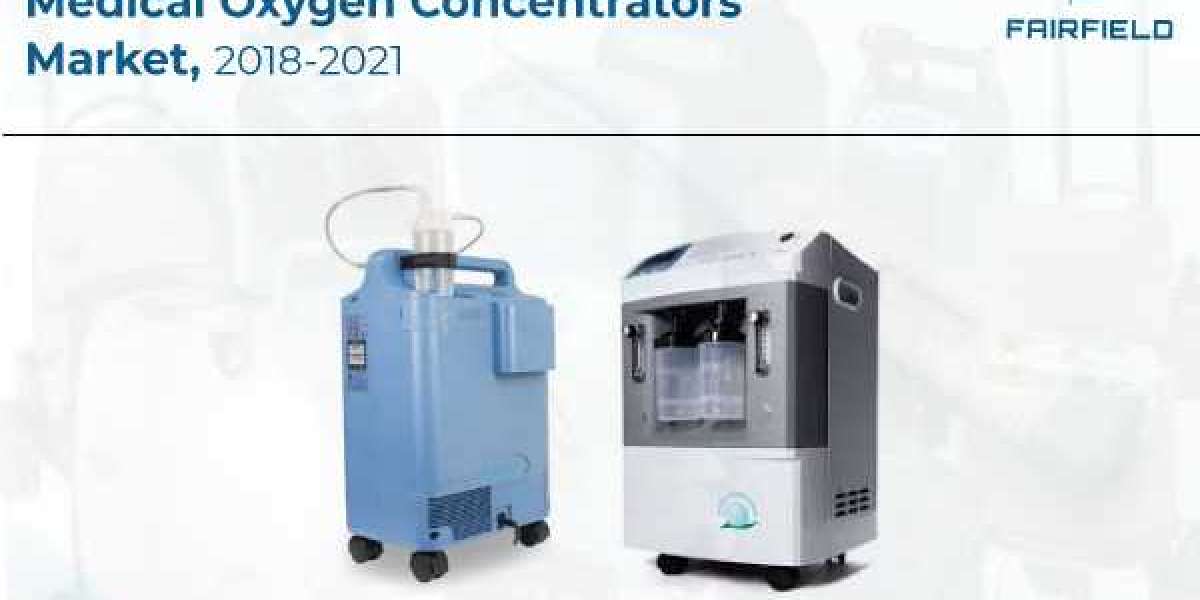The global medical oxygen concentrators market has experienced an unprecedented surge in demand, driven by the outbreak of COVID-19 in 2020. As the pandemic waves worsened the situation, the need for medical oxygen concentrators shot up beyond supply options, causing concerns about healthcare infrastructure. However, this lopsided demand and supply situation also revealed a significant opportunity for market growth. The demand for medical oxygen concentrators is expected to remain robust in the coming years, according to analysts at Fairfield Market Research, as healthcare systems undergo essential transformations.
For More Industry Insight Read : https://www.fairfieldmarketresearch.com/report/medical-oxygen-concentrators-market
During the COVID-19 pandemic, the base oxygen needs in various regions were found to be dependent on the capacity of the health system and the number of available hospital beds, including intensive care units (ICU) and non-ICU beds. While large-scale industrial gas plants supplied concentrated oxygen to healthcare settings, geographies with lower volume demands relied on air separation technologies such as pressure swing adsorption (PSA) or volume swing adsorption (VSA) to create medical oxygen at scale. Unfortunately, low- and middle-income countries (LMICs) faced challenges in bridging the supply-demand gap due to limited resources.
Tectonic shifts in LMICs have highlighted the need for oxygen services as the demand for oxygen therapy continues to rise. Demographic and epidemiological changes, including the prevalence of noncommunicable diseases (NCDs) among children, indicate that by 2050, a significant portion of the world's elderly population will reside in LMICs. The shift towards domestic funding for health systems poses a concern for oxygen access in LMICs, as countries increasingly prioritize their limited budgets.
The COVID-19 pandemic exposed the fragility of global oxygen supply systems, particularly in LMICs. While a majority of COVID-19 patients experienced mild or moderate illness, a significant percentage required oxygen therapy, with some being critically ill. As a result, there was a massive spike in demand for medical oxygen, especially in LMICs, where the pre-pandemic supply capacity was inadequate.
Addressing the oxygen supply shortfall requires substantial investments. The Access to COVID Tools Accelerator (ACT-Accelerator) estimates that US$ 1.6 billion in funding is needed over the next 12 months to meet short-term oxygen demand for the most challenged nations. The rise of single-payer health systems has contributed to a broader scale-up of oxygen use for various indications, making further investment in the global medical oxygen concentrator market justifiable from both epidemiological and economic perspectives.
The demand for continuous oxygen supply has been on the rise due to the growing prevalence of respiratory conditions such as chronic obstructive pulmonary disease (COPD) and asthma. Critical care cases requiring continuous oxygen supply have also increased, particularly in critical care units of hospitals. Continuous flow oxygen concentrators have gained preference over pulse mode delivery concentrators in these situations.
The pandemic has also underscored the need for oxygen support in home care settings, where an overwhelming number of COVID-19 patients have been treated. The unavailability of hospital beds and critical care support has prompted many patients with mild symptoms to be home-isolated and treated with low-cost portable oxygen concentrators. There are strong indications that portable medical oxygen concentrators will become increasingly available in social and commercial spaces in the near future.
Asia Pacific, with its highly populous economies such as China and India, leads the global medical oxygen concentrators market. The region has witnessed a high prevalence of respiratory conditions caused by pollution, respiratory infections, and tobacco smoking. In 2017, nearly 75% of all deaths in the region were linked to chronic respiratory conditions, creating a significant revenue generation opportunity for key market players.
The global medical oxygen concentrators market is dominated by key companies such as Longfian Scitech Co., Ltd., Koninklijke Philips N.V., ResMed, Air Water Inc., BOC Healthcare (The Linde Group), Chart Industries, Teijin Limited, NIDEK Medical Products, Inogen, and Invacare Corporation. These players are driving innovation and advancements in the medical oxygen concentrators industry to meet the growing demand.
In conclusion, the COVID-19 pandemic has highlighted the critical importance of medical oxygen concentrators in supporting patients with respiratory illnesses. The surge in demand during the pandemic exposed vulnerabilities in global oxygen supply systems, particularly in LMICs. However, this crisis also paved the way for significant market growth opportunities. With the rise in respiratory ailments and the need for continuous oxygen supply, the global medical oxygen concentrators market is poised for substantial expansion in the foreseeable future.
Read more :


